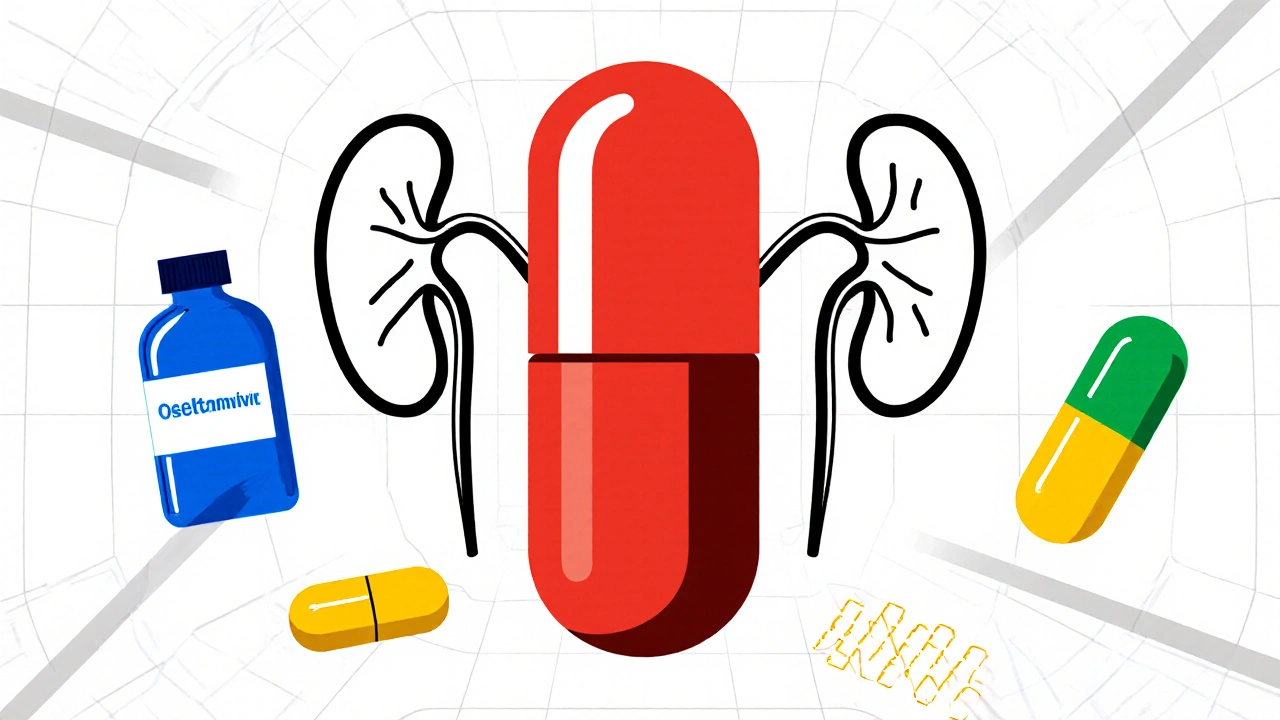Influenza Medication: What Works, What Doesn’t, and What You Need to Know
When you’re stuck in bed with a fever, chills, and a cough that won’t quit, influenza medication, prescription drugs designed to shorten and lessen the severity of the flu virus. Also known as flu antivirals, these aren’t just fancy pills—they’re your best shot at getting back on your feet faster. Unlike antibiotics, which fight bacteria, influenza medication targets the virus itself. And timing matters. These drugs work best if taken within 48 hours of your first symptom. Miss that window? They still help, but not as much.
Two main types of oseltamivir, an oral antiviral sold as Tamiflu, used to treat and prevent influenza A and B and zanamivir, an inhaled antiviral effective against the same flu strains, often used for people who can’t take oral meds are the most common. Oseltamivir is the go-to for most people because it’s easy to take—just a pill twice a day for five days. Zanamivir works fast but isn’t for everyone. If you have asthma or COPD, inhaling it can trigger breathing problems. There are newer options like baloxavir, but they’re pricier and not always covered by insurance. The bottom line: not all flu meds are created equal, and your health history decides what’s right for you.
Here’s what most people don’t realize: influenza medication doesn’t cure the flu. It doesn’t make you feel better overnight. What it does is cut the average illness time from seven days to five, reduces your risk of complications like pneumonia, and lowers the chance you’ll pass it to your family. That’s huge. But here’s the catch—you can’t just grab it over the counter. You need a prescription. And if you’re healthy and young, your doctor might tell you to rest, hydrate, and let it run its course. That’s not because the meds don’t work—it’s because the risk of side effects might outweigh the benefit for low-risk patients.
What about the stuff you see online? Those "miracle flu cures"? Skip them. No supplement, vitamin, or herbal spray can replace a proven antiviral. The FDA doesn’t approve them for treating influenza, and many are just expensive placebos. Stick to what’s been tested in real people, in real hospitals. If you’re over 65, pregnant, diabetic, or have heart or lung disease, you’re in the high-risk group. For you, influenza medication isn’t optional—it’s a safety net.
And don’t forget prevention. The flu shot doesn’t guarantee you won’t get sick, but it reduces severity and lowers your chance of ending up in the hospital. Combine that with good hand hygiene and staying home when you’re sick, and you’re doing more than most. Influenza medication is a tool, not a substitute for smart habits.
Below, you’ll find real, no-fluff guides on how these drugs work, what they cost, how they interact with other meds you might be taking, and what to watch out for—especially if you’re on heart medication, antidepressants, or managing chronic conditions. No marketing. No hype. Just what you need to know before you call your doctor.

Oseltamivir Interaction Guide: What to Know About Other Medications
- Oct, 25 2025
- 9
Learn how Oseltamivir interacts with common drugs, what risks to watch for, and practical steps to keep flu treatment safe.
Categories
- Health and Wellness (51)
- Medicine (35)
- Health and Medicine (23)
- Women's Health (9)
- Mental Health (8)
- Men's Health (7)
- Beauty and Wellness (4)
- Health Information (4)
Archives
- December 2025 (11)
- November 2025 (25)
- October 2025 (27)
- September 2025 (14)
- August 2025 (3)
- July 2025 (2)
- June 2025 (2)
- May 2025 (3)
- April 2025 (4)
- March 2025 (4)
- February 2025 (2)
- January 2025 (3)
- online pharmacy
- medication safety
- dietary supplement
- health benefits
- dietary supplements
- prevention
- fertility
- online pharmacy Australia
- treatment
- treatment options
- benefits
- connection
- drug interaction
- drug interactions
- pregnancy
- Cancer Treatment
- depression medication
- antidepressants
- quality of life
- anxiety treatment
